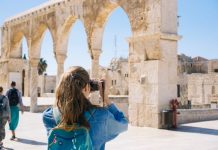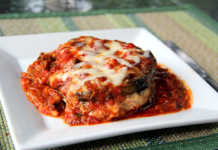“Bread and circuses,” as Juvenal said, are the best way to distract and occupy the attention of the masses. What better way to get people’s attention than to interrupt the thing they used to neglect? Here is a list of some of the most powerful protests in the world of sport.
- Feyisa Lilesa
![Feyisa Lilesa - For Oromo [Iimage source: Oliver Morin/AFP/Getty Images], crowd ink, crowdink, crowdink.com, crowdink.com.au](http://crowdink.com/wp-content/uploads/2016/08/Feyisa-Lilesa-1.jpg)
During the post-race news conference Lilesa said: “The Ethiopian government is killing my people, so I stand with all protests anywhere, as Oromo is my tribe.” “My relatives are in prison”, Lilesa pleaded, “if they talk about democratic rights they are killed.” The state broadcaster in Ethiopia did not reply to the finish. Lilesa knew how dangerous his protest could be. “If I go back to Ethiopia maybe they will kill me. If not kill me, they will put me in prison.”
Social media in Ethiopia and around the world jumped to support Lilesa and he has put the plight of his Oromo people into headlines everywhere. Hopefully his protest will not be in vain, or cause him harm, but only serve to shine a light on the ongoing protests in Ethiopia.
- Black Power Salute – 1968 Olympics
![Peter Norman, Tommie Smith, and John Carlos [image source: griotmag.com], crowd ink, crowdink, crowdink.com, crowdink.com.au](http://crowdink.com/wp-content/uploads/2016/08/Black-Power-Salute-1.jpg)
The protest, and the famous photo by photographer John Dominis is one of the defining moments of sport in the 20th century. However, what is not commonly known is that it was not a protest, but protests. Smith and Carlos were also shoeless wearing black socks to represent black poverty. Smith wore a black scarf to represent black pride. Carlos had his tracksuit top unzipped to represent the plight of blue collar workers, and wore a beaded necklace which he described as being for “those individuals that were lynched, or killed and that no one said a prayer for, that were hung and tarred.”
Moreover, the third athlete on the podium is also often overlooked, Australian silver medallist Peter Norman. It was Norman, who when Carlos forgot his pair of black gloves, suggested they (Smith, Carlos) wear one each of Smith’s pair. Norman was a critic of Australia’s White Australia Policy and showed solidarity with their protest. All three athletes wore Olympic Project for Human Rights (OPHR) badges. In Smith’s autobiography Silent Gesture he stated that the protest was not a “Black Power” salute, but a “human rights salute.”
- Muhammad Ali refuses US Army draft.
![Muhammad Ali [image source: arhe.co], crowd ink, crowdink, crowdink.com, crowdink.com.au](http://crowdink.com/wp-content/uploads/2016/08/Ali-vs-U.S.A-1.jpg)
Ali was convicted of draft evasion, sentenced to five years in prison, fined $10,000 and banned from boxing for three years. In 1971, the U.S. Supreme Court overturned his conviction. The U.S. lost in Vietnam. Ali won the admiration of millions the world over.
- Emily Davison
![Emily Davison [image source: www.theguardian.com], crowd ink, crowdink, crowdink.com, crowdink.com.au](http://crowdink.com/wp-content/uploads/2016/08/Emily-Davison-1.jpg)
There is much historical controversy over Davison’s actions that day. It is unlikely she intended to martyr herself as she had a return ticket from Epsom and had made plans with her sister to travel together. In the documentary Secrets of a Suffragette, digitally remastered footage of the event suggests that not only may she have targeting the King’s horse specifically, but that her intention was actually to attach a flag to the horse’s bridle. Police reports suggested two flags were found on her body.

![5 Reasons You Should Travel Alone Airplane [image source: chau nguyen/ http://thedevilhatessweatpants.blogspot.com.au ], crowd ink, crowdink, crowdink.com, crowdink.com.au](https://crowdink.com/wp-content/uploads/2016/08/Chau-airplane-218x150.jpg)

























![Feyisa Lilesa - For Oromo Feyisa Lilesa - For Oromo [Iimage source: Oliver Morin/AFP/Getty Images], crowd ink, crowdink, crowdink.com, crowdink.com.au](https://crowdink.com/wp-content/uploads/2016/08/Feyisa-Lilesa-1.jpg)


![5 Reasons You Should Travel Alone Airplane [image source: chau nguyen/ http://thedevilhatessweatpants.blogspot.com.au ], crowd ink, crowdink, crowdink.com, crowdink.com.au](https://crowdink.com/wp-content/uploads/2016/08/Chau-airplane-100x70.jpg)


